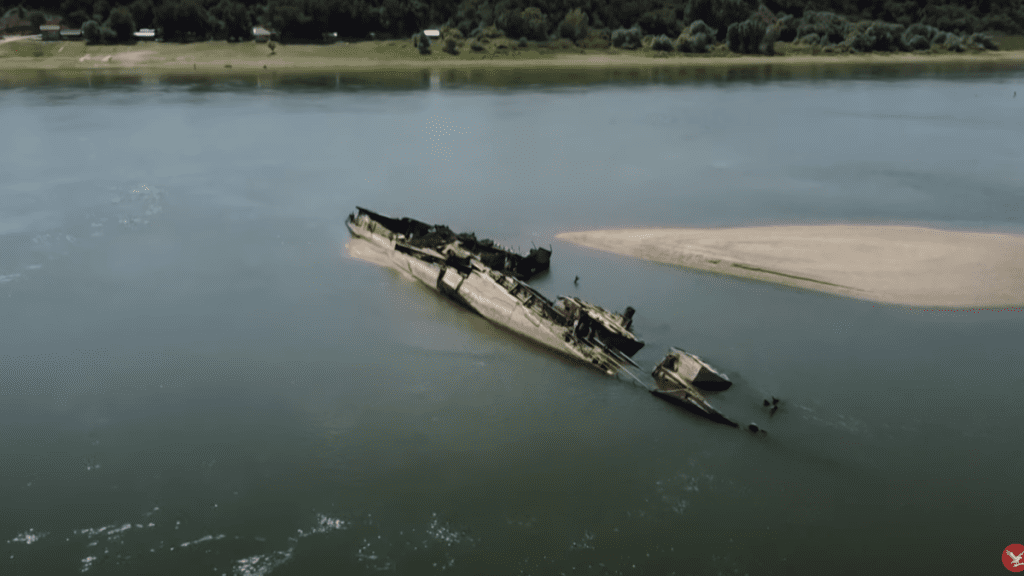Europe's Extreme Drought Reveals Sunken German WWII Warships Complete With Bombs, Ammunition

An extreme drought in Europe has left one of the continent’s largest rivers, the Danube, at its lowest water levels in nearly a century. Those low water levels have exposed dozens of German warships – laden with explosives – that were sunk during World War II.
According to The New York Times, these ships were part of Nazi Germany’s Black Sea fleet. They were purposely sunk by the retreating German Navy near Serbia in 1944 to stop them from being captured by a Soviet Army that was closing in.
There are about 10,000 pieces of unexploded ammunition on board, according to the paper.
“The German flotilla has left behind a big ecological disaster that threatens us, people of Prahovo,” Velimir Trajilovic, an author from Prahovo who wrote a book about the German ships, told Reuters.
Europe drought: Low water on Danube river reveals sunken WW2 German warships
CNN reports some of the ships still have their turrets, command bridges, broken masts and twisted hulls. Meanwhile, others are still mostly submerged under sand banks.
G/O Media may get a commission
ThisWorx Cordless Car Vacuum
Suck it up
Only 2.4 pounds, has a 60w motor for powerful suction, has a lithium battery that can store charge for up to 18 months, which means you can leave it in the car, and it even comes with different heads for different uses as well.
Locals working in the fishing industry are at risk, and so is the country of Romania, which lies across the river.
Apparently the drought has become so bad in parts of Europe, including Germany, Italy, France and Serbia, that authorities in various countries have resorted to dredging the Danube to keep it open. These exposed ships have only exacerbated the problem.
They have narrowed passable sections on one stretch of the Danube to just 100 meters – that’s only about half of the previous 180 meter passable section.
Earlier this year, the Serbian government assessed how much it would cost to remove the sunken vessels, ammunition and explosives. They found out it would cost just about 29 million euros ($30 million U.S.).
As of right now there’s no word on what the fate of the wreckage will be, but it sure is neat to look at. Damn Nazis.





